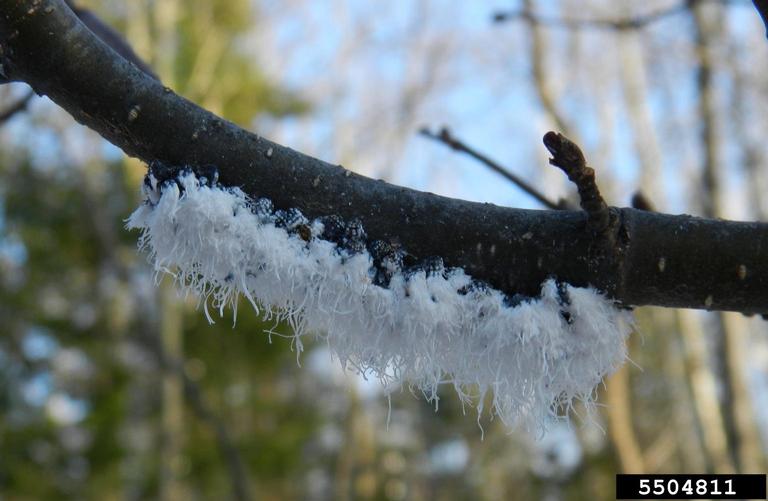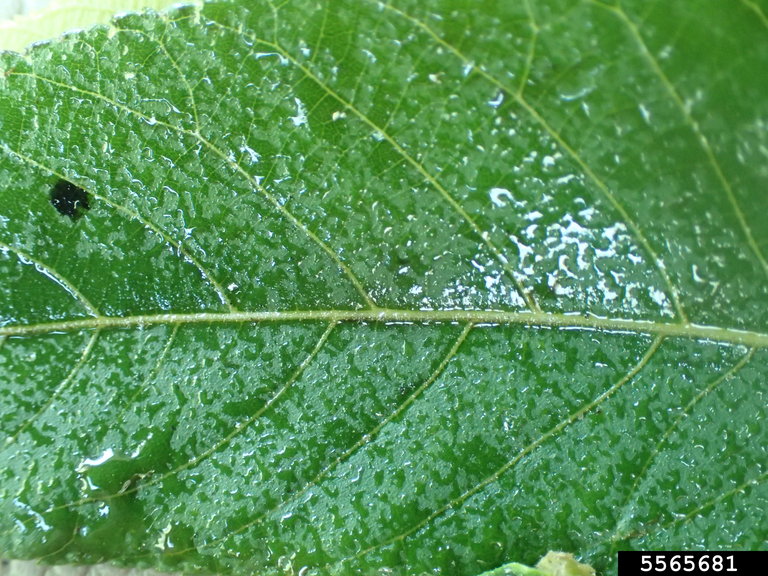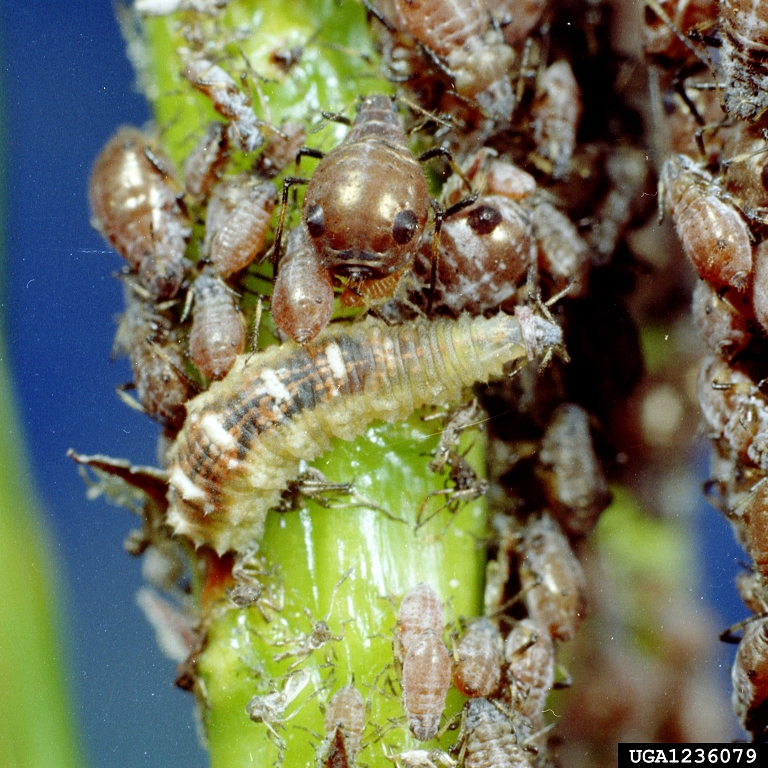 Aphids - March 14, 2018 Jeff Schalau, Agent, Agriculture & Natural Resources University of Arizona Cooperative Extension, Yavapai County Recently you may have seen aphids on pines as well as other ornamental plants with succulent stems and leaves. Aphids have piercing-sucking mouthparts allowing them to suck the nutritious cell sap from flowers, leaves, stems, and sometimes roots, of many plants in our landscapes and gardens. Aphids are soft-bodied insects that come in many shapes, sizes, and colors. The first indication of their presence may be a shiny, sticky material on the leaves. This liquid is called honeydew. Another sign may be curled, stunted leaves on new growth in spring. Close inspection will usually reveal the insect itself, but donít get in a hurry to use pesticides. In most cases, aphids and the damage they cause may appear unsightly, but usually it is not serious and causes little long-term harm to the plants they colonize. Aphids can reproduce rapidly by using unique strategy called parthenogenesis. Here, female aphids give live birth to female young that are genetically identical to the parent. After a few generations, they produce winged female aphids and these may fly to a different feeding area if environmental conditions change or food quality declines. These winged females can also reproduce by parthenogenesis, giving birth to winged young. Late in the season, the winged aphids return to the original food plant and some females turn into males. The males and females mate and a specialized female lays eggs that are able to overwinter. While observing, you may see ants walking among the aphids. They are probably collecting the honeydew for food. The honeydew is colorless and sticky because it contains sugars from the plant and is exuded from the anus of the aphid as waste. Some ants will protect aphids and carry them from one plant to another. In this way they cultivate honeydew. Sometimes, ants will carry the eggs to their nest for the winter and transport them to a food plant the following spring. In time, excess honeydew may build up, fungal spores in the air land on it, and sooty mold can begin growing. If left on painted surfaces, damage or discoloration can result. Human gardeners may not appreciate the value of aphids as ants do. Even so, we should not be in a great hurry to control them with pesticides. While most synthetic pesticides will effectively kill aphids, these insecticides will also kill beneficial predators that provide natural aphid control. Most gardeners are aware that lady beetle, ant lion, and lacewing larvae are effective predators of aphids, but there are many others. Many insects including earwigs, assassin bugs, minute pirate bugs, stink bugs, soldier beetles, syrphid fly larvae, aphid flies, and parasitic wasps are natural enemies of aphids. With this assortment of "good guys," chemical control methods should only be used as a last resort to control aphids. The simplest management tool against aphids is a good blast of water from a high pressure hose nozzle. This knocks most of them off the plant while not creating a toxic residue that would harm natural enemies. Soap sprays can also be effective at managing aphids. You can purchase insecticidal soaps or mix your own. Homemade soap sprays are made by adding one tablespoon of dishwashing soap or detergent to one gallon of water. Always apply to a small area of the plant to see if the solution will adversely affect the plant foliage. Avoid citrus scented types because they can damage plants. Some aphids protect themselves with a waxy substance giving them a cottony white appearance. The wax protects them from the environment and predators. Other aphids cause leaves to roll and create a protective shelter for the aphids inside. These can be more difficult to control. In severe cases, pesticide application may be warranted to control these types of aphids. They include wooly apple aphids and wooly ash aphids. If ants are tending the aphids, then it may become necessary to control the ants. Ants can be controlled by using tanglefoot (a sticky substance that creates a physical barrier) at the base of the colonized plant. If the ants persist, you can use baits or apply pesticides to the soil or base of plant. These strategies target the ants while limiting exposure to natural enemies. By monitoring aphid and ant populations, carefully choosing types and timing of control methods, and encouraging natural enemies, you are practicing integrated pest management (IPM). See below for more information about aphids. Follow the Backyard Gardener on Twitter Ė use the link on the BYG website. If you have other gardening questions, call the Master Gardener help line in the Camp Verde office at 928-554-8992 or e-mail us at verdevalleymg@gmail.com and be sure to include your name, address and phone number. Find past Backyard Gardener columns or provide feedback at the Backyard Gardener web site: http://cals.arizona.edu/yavapai/anr/hort/byg/. Photos  Wooly aphids showing waxy secretions (Brett Marshall, Sault College, Bugwood.org).
Wooly aphids showing waxy secretions (Brett Marshall, Sault College, Bugwood.org). Honeydew from American walnut aphids (Monelliopsis caryae) on an walnut leaf (Brett Marshall, Sault College, Bugwood.org).
Honeydew from American walnut aphids (Monelliopsis caryae) on an walnut leaf (Brett Marshall, Sault College, Bugwood.org). Syrphid fly larva among aphids. The syrphid fly is an aphid predator (Clemson University - USDA Cooperative Extension Slide Series, Bugwood.org).
Syrphid fly larva among aphids. The syrphid fly is an aphid predator (Clemson University - USDA Cooperative Extension Slide Series, Bugwood.org).Additional Resources Aphids University of Arizona Cooperative Extension extension.arizona.edu/sites/extension.arizona.edu/files/pubs/az1635-2014.pdf Aphids on Shade Trees and Ornamentals By W.S. Cranshaw, Colorado State University Extension Entomologist. extension.colostate.edu/topic-areas/insects/aphids-on-shade-trees-and-ornamentals-5-511/ Pests in Gardens and Landscapes: Aphids By M.L. Flint, University of California Extension Entomologist. www.ipm.ucdavis.edu/PMG/PESTNOTES/pn7404.html |